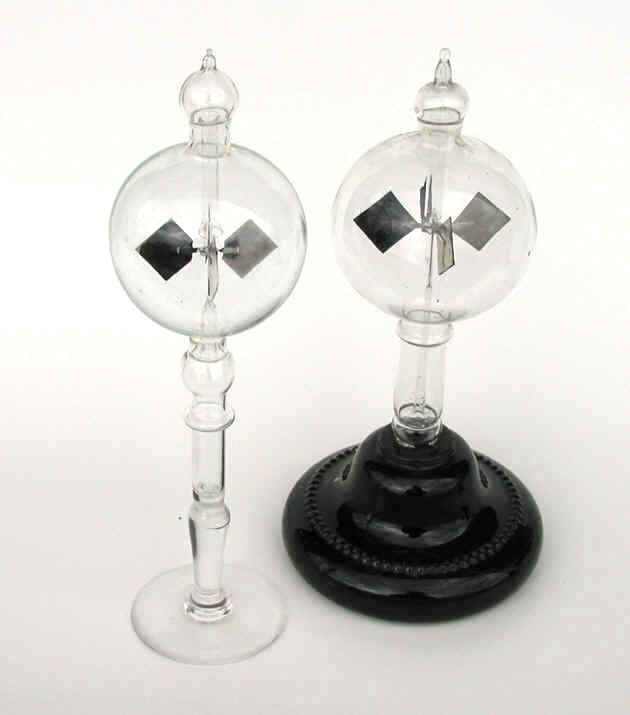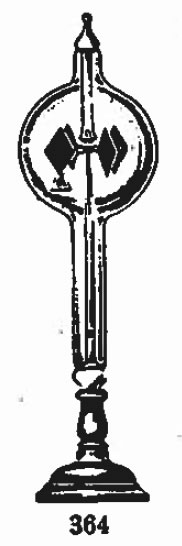Crookes Radiometers (ca. 1900-1920)


The radiometer consists of a partially evacuated glass bulb that contains four diamond-shaped vanes. One side of each vane is painted black and the other side is white. When exposed to light, the vanes of the radiometer rotate so that the black sides move away from the light source. Since the black sides of the vanes are slightly hotter than the white sides, the gas molecules close to the black sides have more kinetic energy than the gas molecules next to the white sides. The collisions of these gas molecules against the black sides of the vanes is responsible for the movement.
The Radiometer was invented in the 1870s by William Crookes during his investigations as to why light was affecting the measurements he was making with a very sensitive balance. His work with the Radiometer lead him to the development of a variety of gas discharge tubes collectively referred to as Crookes tubes. The design of the Radiometer is the obvious inspiration for his "Railway" tube.
The examples on display, no longer working, are difficult to date but were probably manufactured in the early 1900s. The Radiometer with the black ceramic base is British while the other unit is probably German.
The figure to the right is from the 1914 catalog of the Otto Pressler company.
Size: Both examples are of similar sizes when the base is included. Approximately 8.5 high with 2 1/2" bulb diameter.
